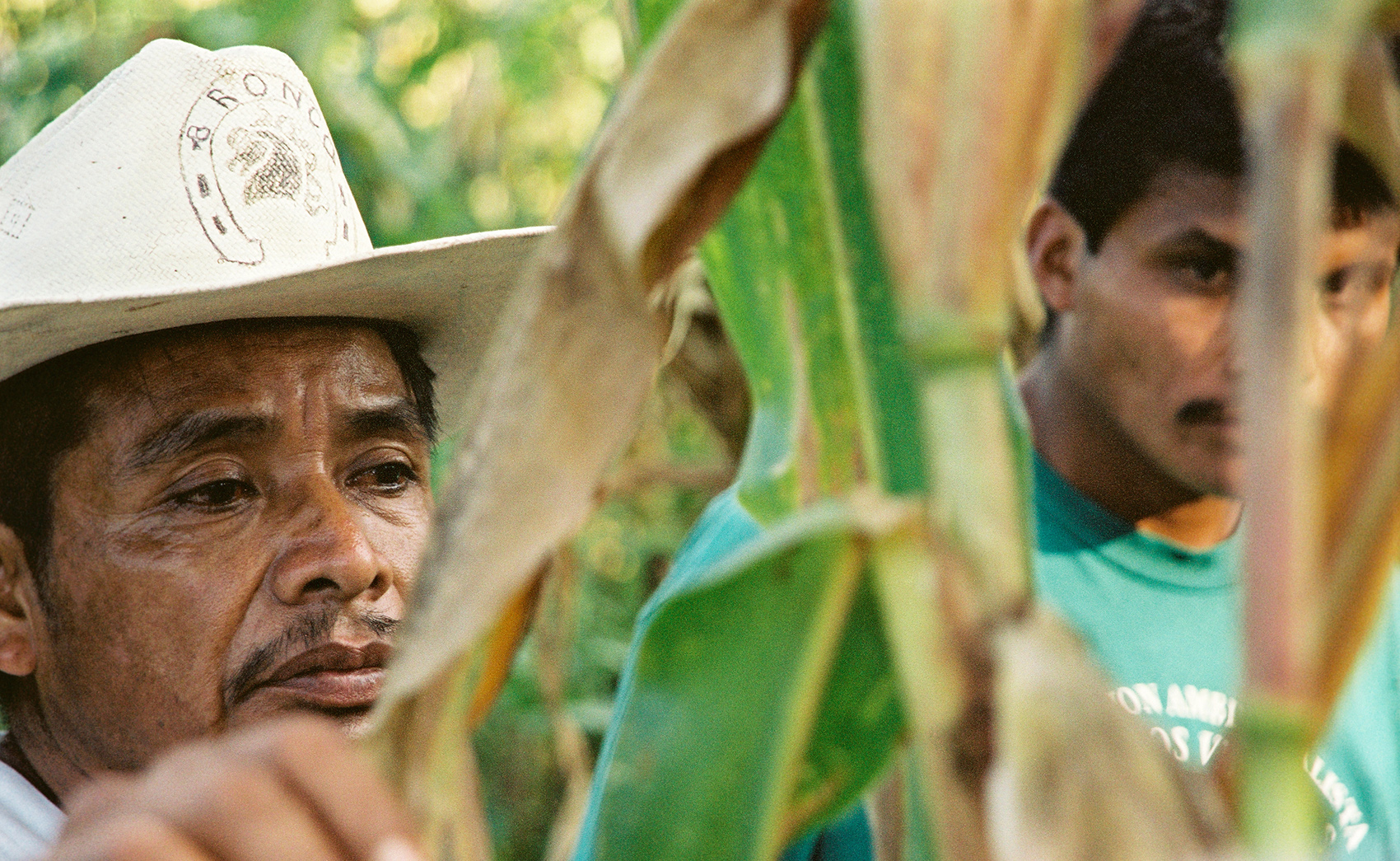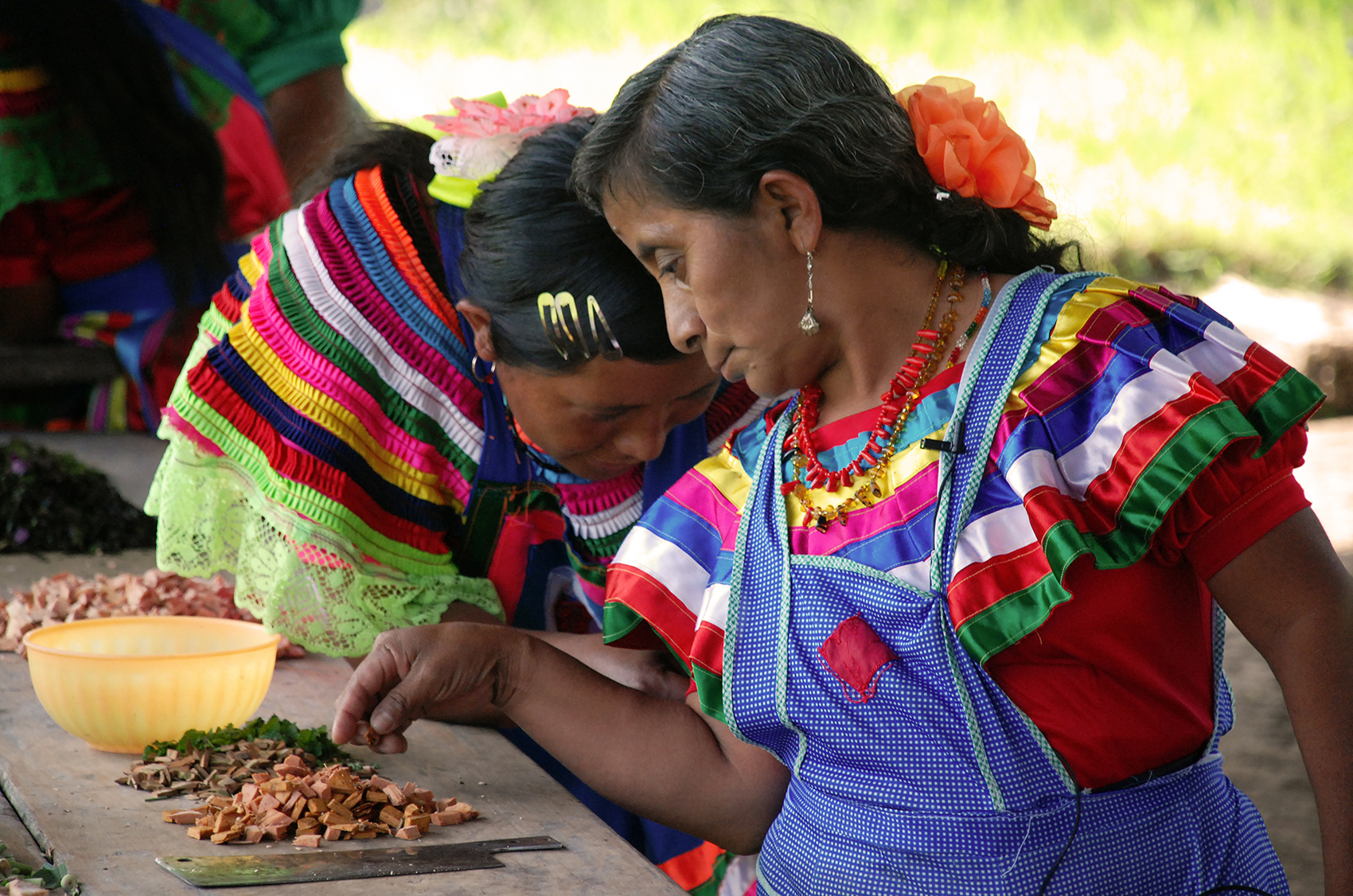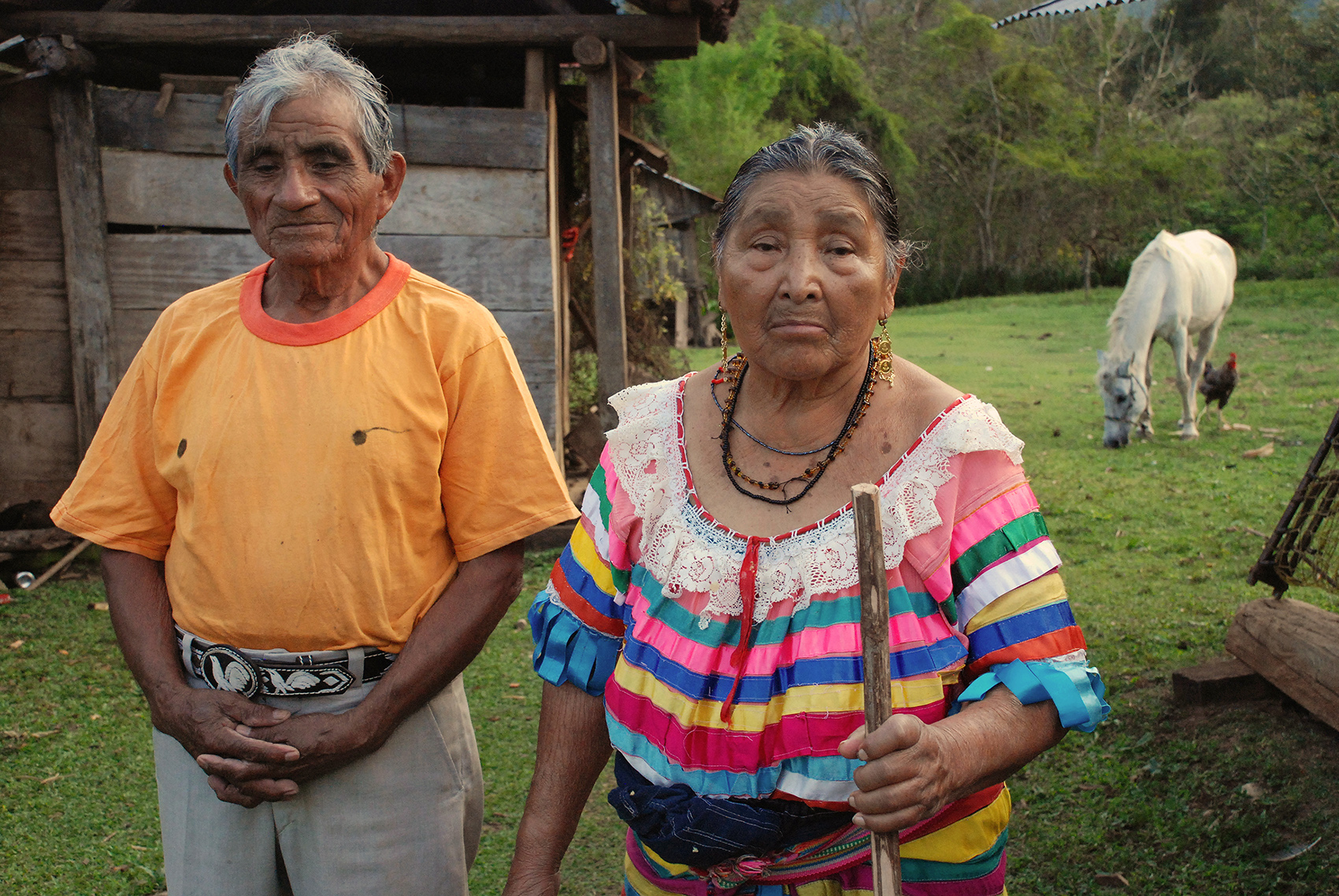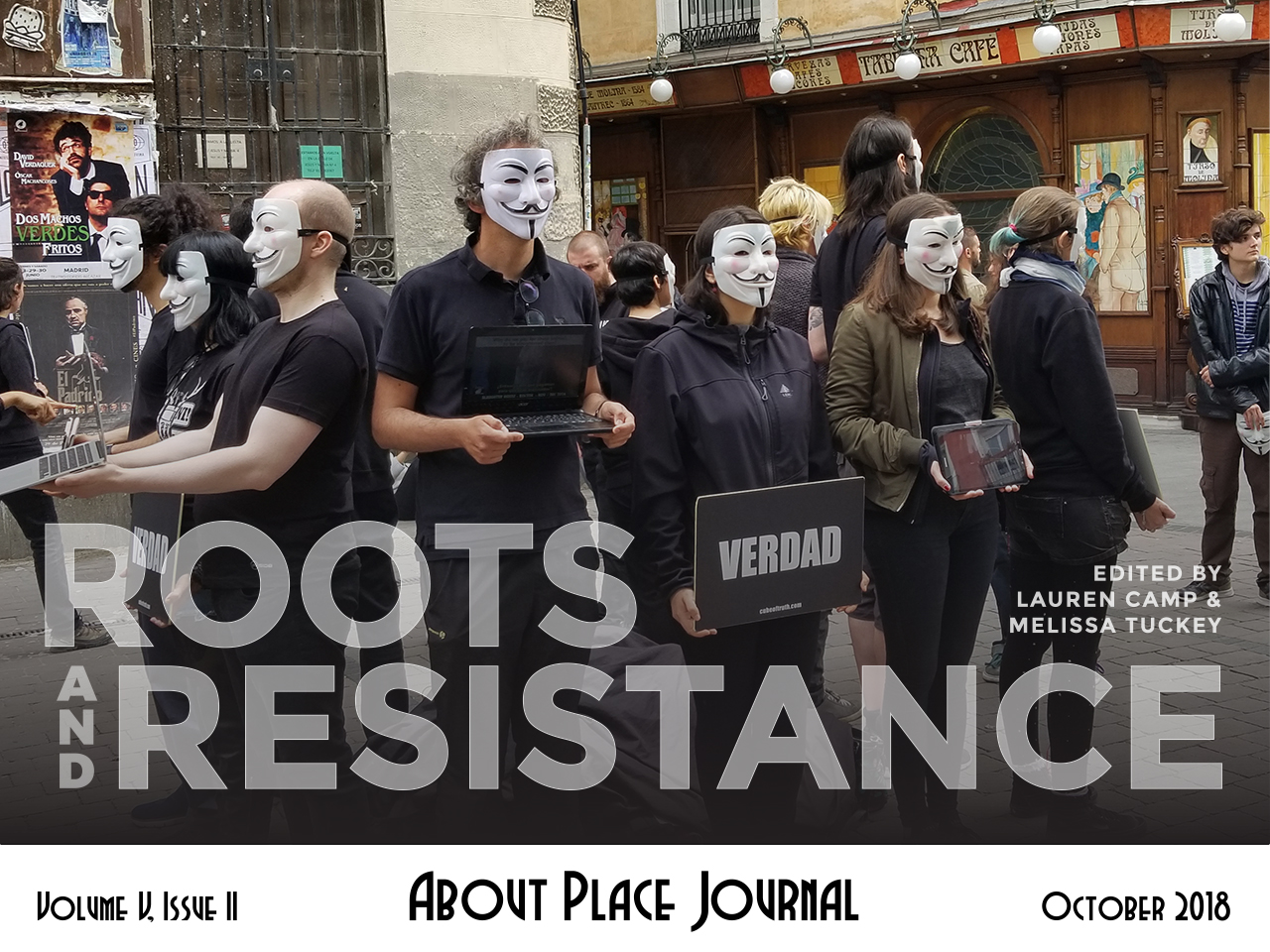
Zapatista Comandante – Rebel territory, Chiapas, Mexico (1996)
The Zapatistas rose up on the day NAFTA (the North American Free Trade Agreement) went into effect, denouncing it as “a death sentence for the Indigenous Peoples of Mexico.” NAFTA rewrote Article 27 of the Mexican Constitution, which guaranteed campesinos the right to ejido (communal) lands. Women played a central role in the Zapatista uprising and some military leaders were women.

Mother and child – Chiapas, Mexico (1999)
After the Zapatista uprising, and in defiance of the Mexican Government (el mal gobierno), the Zapatistas started a system of autonomy referred to as Caricoles (snail shells) which continues today. Women are important decision-makers in their communities. Many of the indigenous who women supported the EZLN were older or had families to care for. Those women contributed by operating radios to warn the communities if the military arrived, by sewing uniforms, feeding troops, and more.

Campesinos working in a Milpa – Nuevo San Gregorio, Chiapas, Mexico (2003)
Following the uprising, communities like Nuevo San Gregorio moved toward a more sustainable way of living on the land based on their old traditions. They ceased using slash and burn agriculture and stopped using harmful chemicals. This community was faced with forced relocation for a conservation project but refused and were not evicted.

Women Traditional Healers – Amador Hernandez, Chiapas, Mexico (2011)
Women also play central roles in rural communities, such as these women who are preparing traditional medicines from materials they harvest from the jungle. The government suspended medical support to the village when they refused to voluntarily leave the jungle. There are no roads to travel the fifteen kilometers into the community.

Elders – Amador Hernandez, Chiapas, Mexico (2011)
In spite of the threat of forced relocation by the Mexican Government, which wants this community’s forest for a carbon offset scheme, life quietly continues. This was the first time these elders had their photograph taken. The photograph was requested by their son. At the time it was taken, the military was expected to invade in four days. The community resisted and was not relocated.


